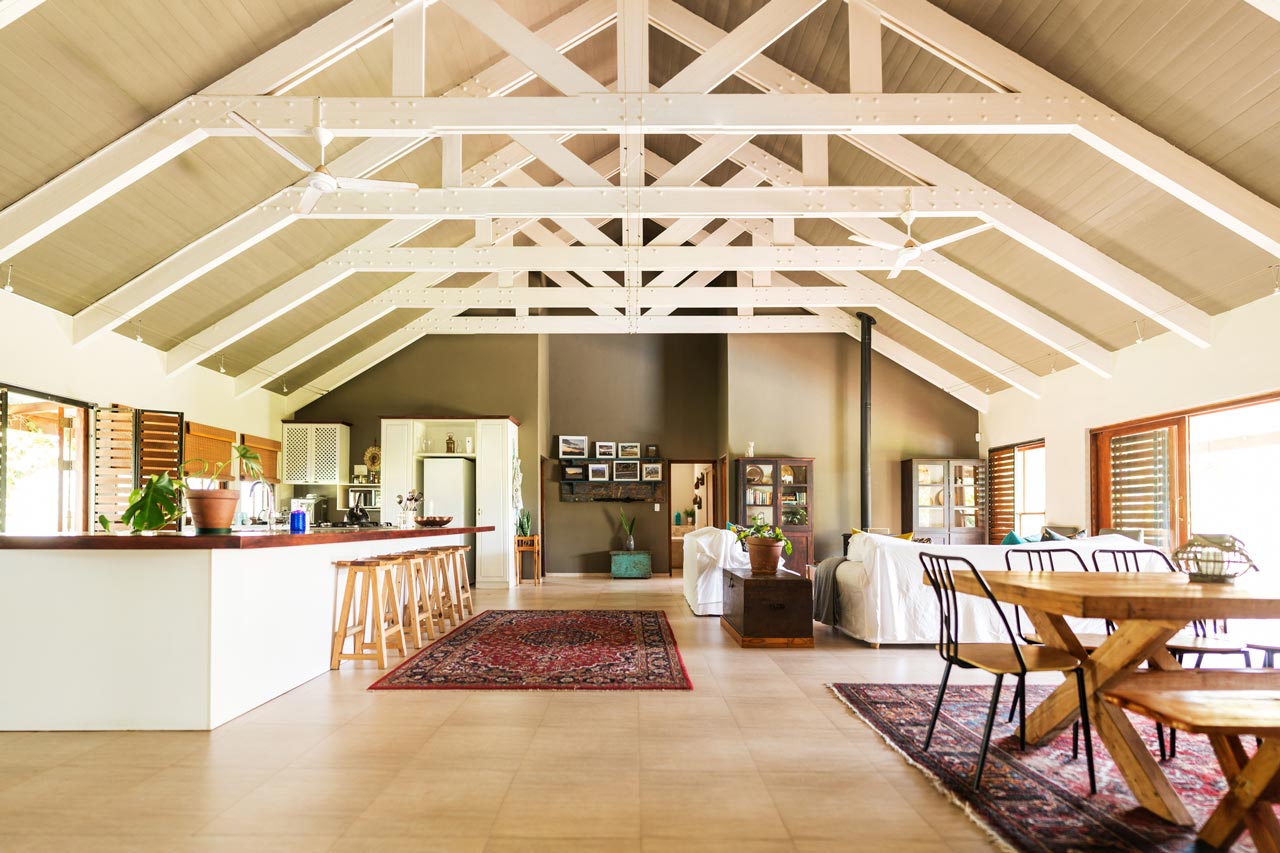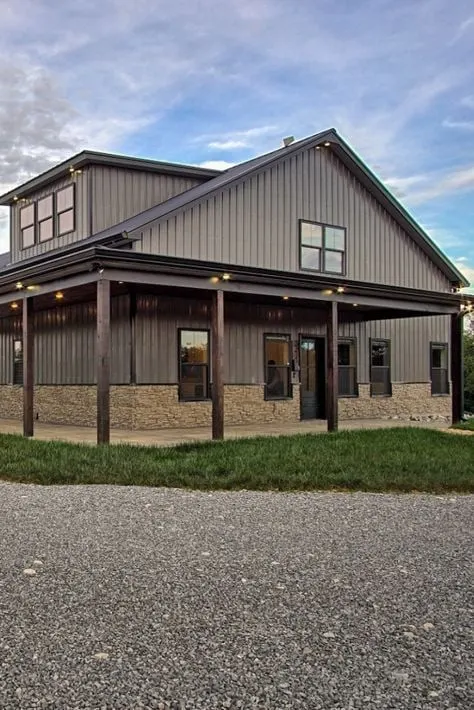Barndominium Builder and Style Solutions: Custom Residences Developed to Last
Barndominiums Vs. Traditional Houses: an In-depth Comparison of Way Of Life and Functionality
The choice in between barndominiums and conventional homes encompasses numerous elements, including way of life choices and functional demands. Barndominiums are identified by their open formats and versatility, commonly appealing to those that focus on communal living and flexibility.
Introduction of Barndominiums
Barndominiums, an unique housing fad obtaining appeal throughout various areas, mix the rustic appeal of barn-style design with the performance of contemporary home. These distinct frameworks usually contain a steel or timber structure, combining open layout and high ceilings with energy-efficient features. Typically situated on extensive country buildings, barndominiums use homeowners the opportunity to appreciate a tranquil lifestyle while providing enough area for various tasks.
The adaptability of barndominiums prolongs beyond their visual charm; they can work as both living quarters and useful rooms for leisure activities, workshops, or also small companies. Their adaptive design permits simple personalization, fitting varied household requirements and choices. Many owners value the low upkeep requirements associated with steel home siding and roof covering, contributing to lasting sturdiness.

Attributes of Conventional Residences
Highlighting classic design and convenience, typical homes are identified by their unique building designs, which usually reflect historical impacts and local aesthetics. Typical features consist of balanced facades, gabled roofing systems, and a focus on workmanship, causing a warm and inviting atmosphere.
Standard homes usually include aspects such as crown molding, wainscoting, and wood floor covering, improving their traditional charm. They normally feature several rooms with defined objectives, advertising family communication while enabling privacy. learn more. The layout usually includes formal living and dining areas, which are helpful to amusing guests and hosting household gatherings
Exterior materials such as brick, wood, or rock are regularly utilized, contributing to toughness and a feeling of permanence. Barndominium builder. Furthermore, lots of typical homes are created with front porches or stoops, promoting a feeling of area and connection with the neighborhood
Landscaping plays a substantial function in traditional home style, with properly maintained yards and pathways that enhance aesthetic appeal - visit site. Overall, conventional homes embody a sense of nostalgia and security, interesting those who value heritage and an extra structured living atmosphere
Expense Contrast
Usually, a price contrast between barndominiums and standard homes exposes considerable differences in construction expenses and total investment. Barndominiums, usually built from steel or steel frames, generally sustain lower product and labor prices than traditional homes constructed from timber and brick. The simplified style of barndominiums can convert to reduced building times, better decreasing labor prices and quickening occupancy.
On standard, the price per square foot for a barndominium varies from $100 to $150, while traditional homes can differ widely, commonly falling between $150 and $300 per square foot, relying on area, products, and design complexity. This expense difference makes barndominiums an appealing option for budget-conscious buyers looking for bigger living spaces without sacrificing top quality.
In addition, barndominiums may cause long-term savings through lower maintenance costs, energy performance, and insurance rates. Their resilient building and construction products usually require much less upkeep gradually contrasted additional resources to typical homes. Nonetheless, it is vital to think about that while first prices may be lower for barndominiums, the last investment will certainly likewise depend on private modification and wanted services, which can affect the general expenditure in both housing types.
Way Of Living and Space Considerations
When taking into consideration way of life and area, barndominiums use a distinct adaptability that interest a selection of homeowners. These hybrid frameworks combine residential dealing with useful room, usually including open floor plans that can be adjusted to fit specific demands. This versatility is particularly beneficial for family members or people looking for a tailored living atmosphere, permitting varied usages such as office, workshops, or recreational areas.

Furthermore, the visual appeal of barndominiums can provide to both rustic and contemporary preferences, making them a functional choice for various design preferences (Barndominium repair). Ultimately, the choice between a barndominium and a standard home typically rests on how well each choice straightens with the home owner's way of life desires and spatial needs, highlighting the significance of thinking about personal priorities in the decision-making procedure
Environmental Effect and Sustainability
The environmental effect and sustainability of barndominiums existing compelling benefits compared to traditional homes. Mostly constructed from steel and various other sturdy materials, barndominiums are typically developed making use of recycled resources, reducing the demand for new materials and decreasing waste. Their style typically highlights open areas, which can lead to lower energy usage for heating & cooling compared to conventional homes with even more segmented formats.
In addition, barndominiums can include lasting features such as solar panels, rainwater harvesting systems, and advanced insulation strategies, boosting their power effectiveness. The adaptability of their layout permits property owners to incorporate these innovations a lot more perfectly than in several typical homes, which may require extensive retrofitting.
Furthermore, barndominiums commonly need fewer sources for building due to their less complex, much more effective designs (view now). Generally, barndominiums stand for a forward-thinking technique to sustainable living, lining up with contemporary environmental priorities.
Conclusion
In summary, the option between barndominiums and typical homes depends upon private way of living choices and useful requirements. Barndominiums, with their open formats and sustainable materials, satisfy those seeking adaptability and common living. Alternatively, traditional homes provide defined areas that improve personal privacy and copyright historic appearances. Each option offers distinct benefits, requiring careful factor to consider of one's values and needs when figuring out one of the most suitable living atmosphere.